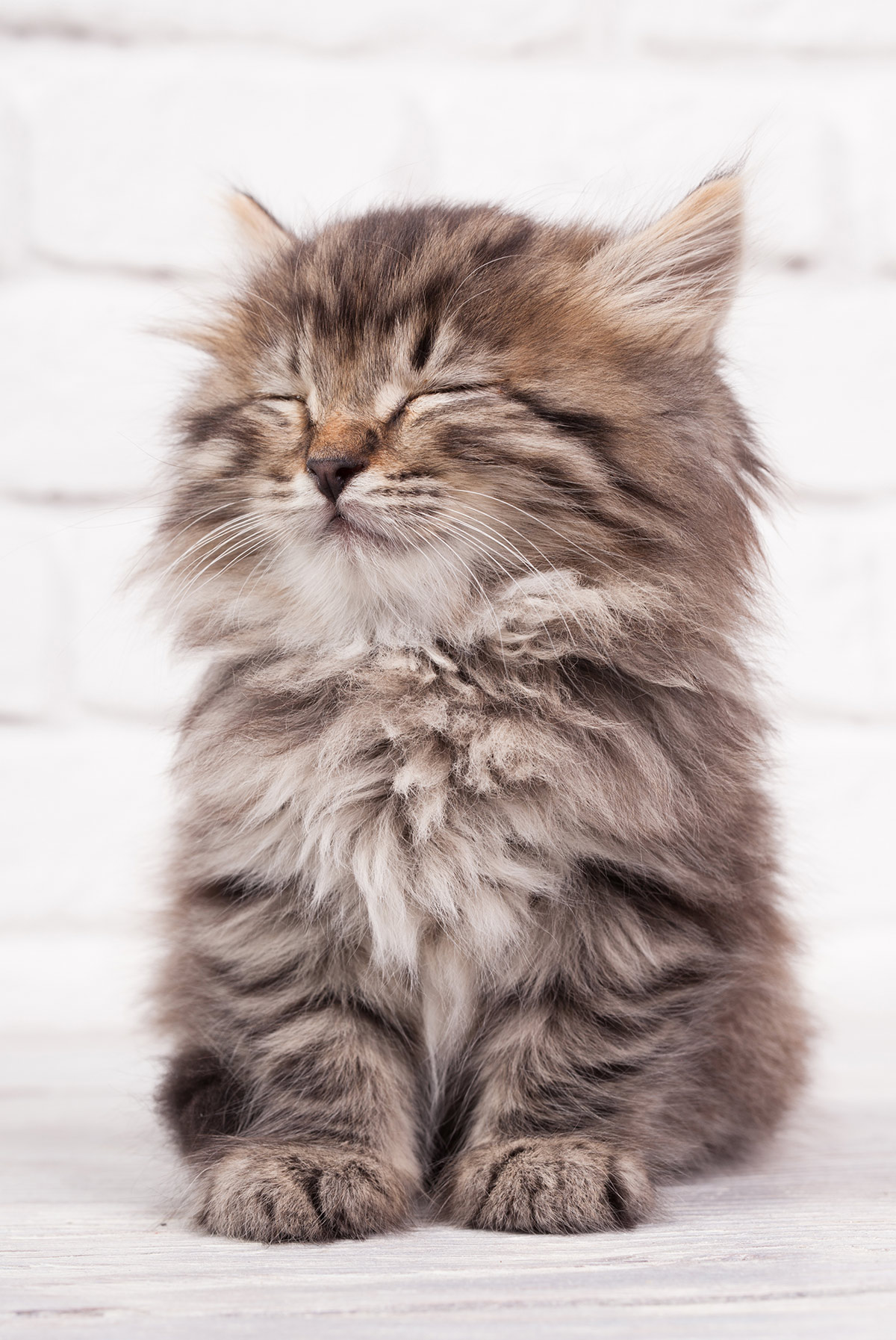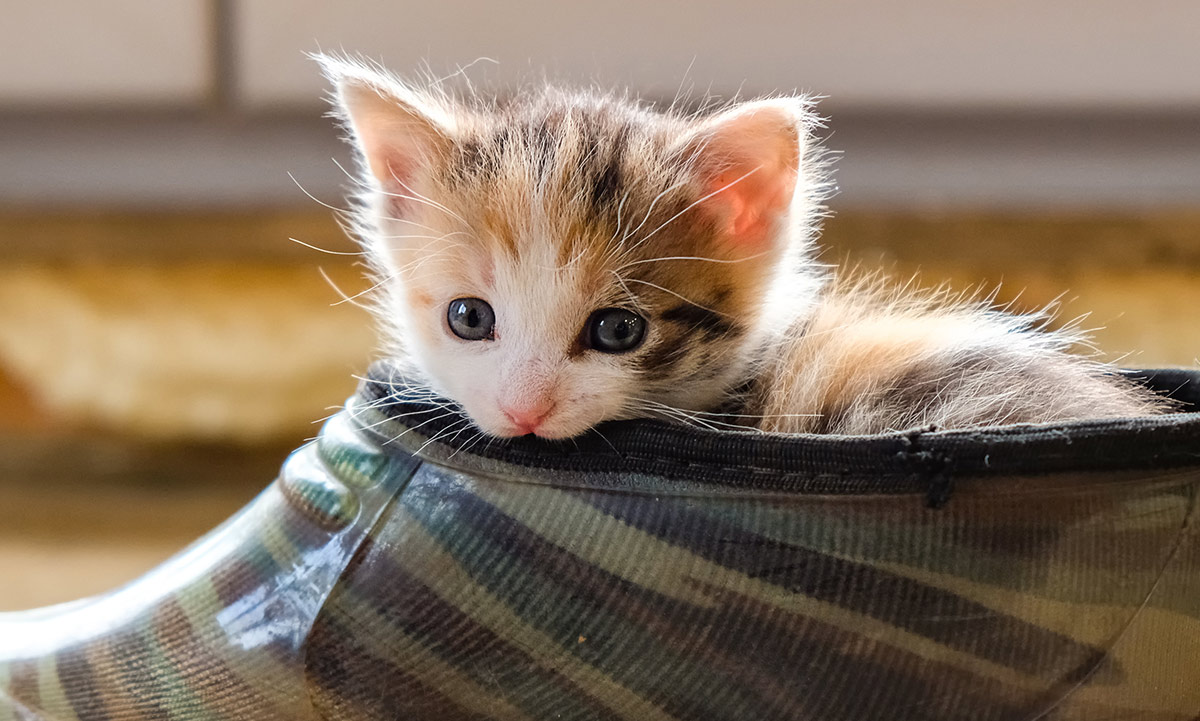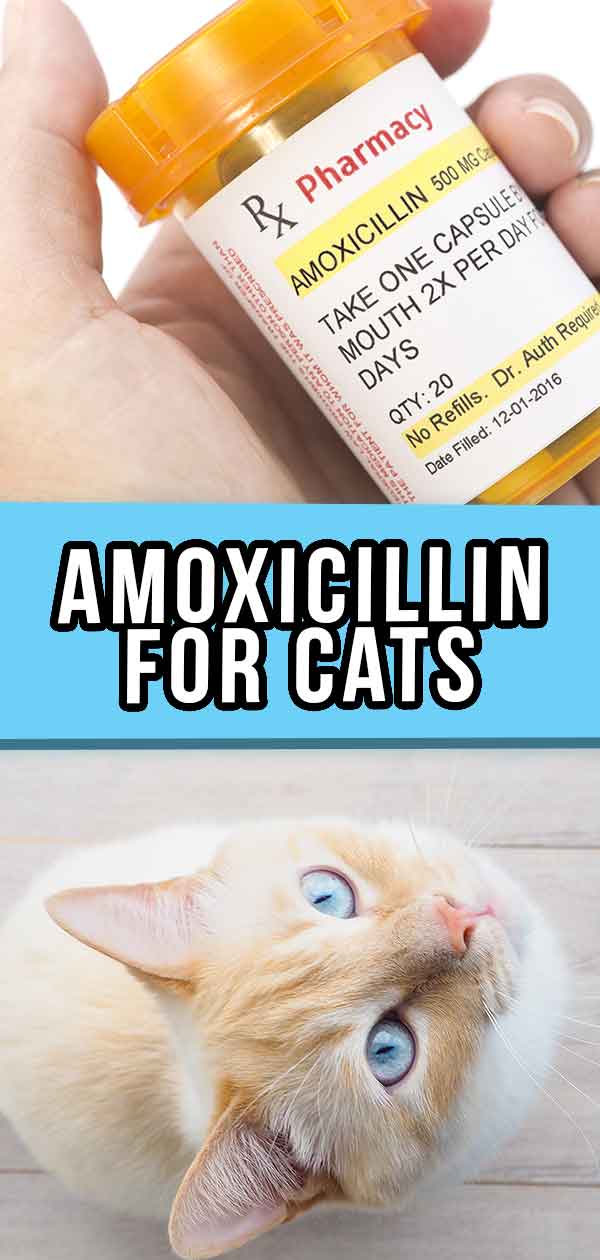
Amoxicillin for cats is a broad-spectrum prescription based antibiotic medication. This drug is effective against bacterial infections. Veterinarians prescribe Amoxicillin for a variety of infections, such as abscesses, respiratory infections, and UTIs.
It is important that your cat completes their course of treatment to reduce the incidence of antibiotic resistance. Generally, the drug has very few side effects, but it is a penicillin. So, it should not be taken by cats with allergies to penicillin.
Contents
- Can Amoxicillin be used to treat respiratory infection for cats?
- Do you need a prescription for feline Amoxicillin?
- Can cats take human Amoxicillin?
- How do I mix powdered Amoxicillin for cats?
- What if I miss a dose ?
What is Amoxicillin for Cats?
There’s nothing worse than when our pets are sick. Unlike humans, they can’t tell us how they feel, and that in itself can be hard to handle. If your cat has an infection, your vet will probably have prescribed you antibiotics.
Amoxicillin is a Penicillin. This exceptionally useful chemical damages the cell walls of bacteria. These badly formed bacteria are at a significant disadvantage and die. At worst, they’re much more easily defended against by the immune system.
Amoxicillin gets into the bloodstream and can reach an infection anywhere in the body from here.

Broad-Spectrum Antibiotics
Amoxicillin can be more specifically described as an aminopenicillin. But it is also known as broad-spectrum Penicillin.
These antibiotics can help with even more types of bacteria than regular Penicillin. Amoxicillin can perform these actions in a number of different organisms, with many of our pets included. It doesn’t work against every bacterium, but it has a lot of them covered.
Unfortunately, the small group of bacteria unaffected by amoxicillin is growing, as part of a major concern over antibiotic-resistant microbes. This is a really scary idea once you get into it. And the future of many of our most treasured antibiotics is uncertain.
But, for now, amoxicillin works fine for a vast range of routine infections. It also works for stopping infections from becoming established in the first place.

What Is Amoxicillin Used for in Cats?
The amoxicillin for cats is essentially the same as what a doctor would prescribe us, but obviously in very different doses. Amoxicillin for cats can treat a variety of bacterial infections. This includes:
- Abscesses
- Urinary tract infections (UTIs)
- Upper respiratory infections (URIs)
Abscesses
Abscesses often affect cats when wounds become infected. This is very common if a cat has been in a fight with another and received a bite.
They generally present as a lump that can be extremely painful to the touch. If left untreated abscesses may continue to fester and potentially go septic. This means that the infection spreads throughout the bloodstream. The cat can become very ill.
Urinary Tract Infections
Amoxicillin is often prescribed to cats for this reason and helps the body to fight the infection. Urinary ailments seem to be one of the more common conditions for cats to suffer from. These infections are unpleasant at best, causing pain and difficulty urinating.
But it can be even worse when a urinary tract infection spreads to the kidneys. It becomes a serious medical emergency. To prevent this from happening, your vet might prescribe amoxicillin to stop the spread of infection. Your cat may begin to feel better a few days after, but be sure to complete the treatment.
Respiratory Infections
Amoxicillin is actually an alternative first-line drug for upper respiratory infections in cats. This means that your vet’s first choice of drug to prescribe would either be Doxycycline or Amoxicillin. Cats often get respiratory infections from other cats. Typically, upper respiratory infections involve the nose and throat. The following symptoms may be seen in cats:
- Sneezing
- Nasal congestion
- Conjunctivitis (red eyes due to inflammation of the membranes lining the eyelids)
- Oral or nasal discharges which may be clear or contain pus
- Fever and enlarged lymph nodes
- Squinting
Amoxicillin kills the bacteria, which in turn reduces and finally completely removes the symptoms.
Nonetheless, it’s important to take your cat to a veterinarian if you think they have an upper respiratory infection. This will help to determine if your cat needs medication. Avoid self-diagnosis because your cat may be infectious and require isolation, antibiotics or other veterinary care.

How to Give Amoxicillin to Cats
Liquid amoxicillin for cats can be fed into the mouth through a syringe. You can hide the tablets in food they can’t resist.
Getting the liquid amoxicillin dosage for cats right is important. To mix the oral suspension for cats, dilute based on the bottle size. For the 15 mL bottle, add 12 mL of water, and add 23 mL to the 30 mL bottle. Remember, though, that any unused portion of the mixed suspension must be discarded after 14 days.
Human Amoxicillin For Cats
The amoxicillin we give our cats is the same as the amoxicillin our doctors give us. But this does not mean that it’s always safe to give our medication to cats. There are two main problems with this, and one is the dosage.
You are much larger than a cat. So the doses you’ve been given will be comparatively huge to your furry friend. Antibiotics can often cause gastrointestinal distress; vomiting, and diarrhea. Unfortunately, in the case of a huge dose, this can and will happen to a worse extent.
Following the Course
The other main problem is the importance of following a full course of antibiotics. You may have wondered why when you take antibiotics you tend to take a course that goes on for a few days after the infection has completely disappeared. There is a very good reason for this. It is relevant to your own safety and the safety of people and pets everywhere.
If we take antibiotics for too short a time, the infection might not be completely destroyed. The remaining bacteria has the ability to come back. And these will be the bacteria that were most resistant to whatever antibiotic was used.
So by taking a poorly conceived and incorrectly dosed course of antibiotics, we can develop bacteria that are less affected by that same antibiotic. This results in an infection in your cat that’s more difficult to treat, and more bacteria in general that are resistant to our best tools against them.
Amoxicillin Dosage for Cats
So, Amoxicillin dosage for cats will vary based on the cat size and condition to be treated. So you’ll notice that recommendations are per kilogram or pound of your cat’s weight.
Amoxicillin is generally available as 100 mg/400 mg tablets and 250 mg/500 mg capsules. Then the Amoxicillin Drops suspension is also available in a 15 ml bottle.
The usual dose of amoxicillin in dogs and cats is 5-10 mg per lb or 11-15mg per kg every 12-24 hours. Some doctors may also prescribe for every 8 hours until at least two days after all signs of infection have gone.
For the liquid amoxicillin dosage for cats, you should dilute based on the bottle size. For the 15 mL bottle, add 12 mL of water, and add 23 mL to the 30 mL bottle. The liquid amoxicillin dosage for cats is typically the same for pets with abscesses or otherwise infected wounds. However, doses should not be decided on from articles online.
The prescription will differ based on the condition of your cat. Your veterinarian will determine the actual dose based on the type of infection being treated.
What If I Miss a Dose?
Like with other meds, it’s possible to forget to give your cat a dose of amoxicillin. This can happen with the liquid amoxicillin dosage for cats or the tablets.
Just give them the missed dose as soon as you remember and continue the course. If it is almost time for the next dose, though, skip the missed dose. Then continue with the regular schedule. Never give your pet two doses at once.
Side Effects and Potential Problems
Aside from rare cases of intolerance, amoxicillin for cats is generally fairly mild in terms of side effects. But if your cat has ever had any issues or allergies to any medication, especially Penicillin, this is something your vet needs to know.
Because it’s a penicillin, cats allergic to penicillins would also be allergic to Amoxicillin. An allergic reaction to Amoxicillin may manifest as trouble with breathing, rashes, hives, etc. Besides allergies which can be life-threatening, there are a few other rare side effects:
- Diarrhea
- Nausea and vomiting
- Poor appetite
- Drooling
In these rare cases, amoxicillin can be a serious risk to health. Usually, though, this isn’t an issue. Although the usual side effects are mild, they are fairly common. Antibiotics of any kind most commonly cause gastrointestinal side effects.
Probiotics
Usually, the colony of bacteria in your cat’s stomach will recover. But sometimes your cat will need probiotic foods to help restore the culture. Your vet will advise you on this if it’s an issue, but it’s really quite simple. It’s just like when your doctor tells you to eat active culture yogurt after a course of penicillin.
The fact is that there are side effects — like with any other medicine. But they are very mild in comparison to the potential harm your cat could suffer if you don’t give them antibiotics when they need it.
Amoxicillin for Cats Overdose
Amoxicillin is a very safe drug for cats. There are rarely ever any toxicities reported and generally, the medicine is prescribed as safe doses.
If your cat has ingested too much amoxicillin, it’s natural to be panicked. Take them to the vet immediately. Overdosing on antibiotics can lead to mild or severe effects. You could see gastrointestinal adverse effects such as vomiting or bloody diarrhea. Other overall signs include skin lesions, liver failure, tremors, and seizures.
So, act quickly to save your cat.
Can amoxicillin be given to a cat who is nursing one week old kittens?
Does it make them tired and sleepy
Where can i get over the counter amoxicillin for my cats that have upper respiratory infection? I can’t afford clavamov and I have 7 cats some of witch were saved.
Try FishMox. It’ the same thing over the counter.
We actually just ordered some from Walmart. Com for $9.99 + s&h
What are using is always worked for me is you can get it at any place you buy vitamins L lysine it’s something they get naturally as well from their mom. You crush it up and put it in their food. I usually put three or four from what I understand do you can’t give them too much to hurt them I have had feral cats for 15 years and have treated kittens with this medication and it has worked every time unless it’s severe and they need to go to a vet
I have 500 ml tablets of amoxicillin can i crush them and mix with water. How many units can i give orally. And would it be safe?
How much do I give my cat from a 500mg amoxicillin pill? She weighs over 19lbs?
5-10mg per lb. Or 11-12mg per kg.
A 15 ML bottle of Amoxi drops. Was given to my cat . She is to get 1.5 ccs every 12 hours. How much is that wiith the dropper in the bottle?
I realize this is way too late for you, but in case anyone else wants to know –
1 cc = 1 ml (milliliter)
So your cat’s dose is 1.5 ml (or 1.5 cc’s) every 12 hours.
They are exactly the same amount, just different ways of saying it. A thoughtful Dr should not use both “terms” on a prescription for a layperson – which is almost everybody! Even though cc’s and ml’s are interchangeable in medical speak, it just confuses laypeople and can lead to unintentional medication errors & harm. (Not to mention the added stress & aggravation. And no one needs more of that when caring for a sick cat!)
I miss my cat my daughter still cry ppl
Rest in peace Flae poor kitten past away at least now she isn’t suffering anymore it was the first kitten i got so attached to me and my girl had a great time with Flae we love you lil one
I have 100ml smoxicillin pills. How much water should I mix with it to give a 4 to 5 lb. kitten. Also dosage amount please.
Hello everyone! 👋
My question is, we purchased 500mg amoxicillin capsules from Walmart. Com for my son’s cat. We figured out he will need 50mg every 12 hours, but, i need help figuring out how to break down the correct dosage, ie; how much powder from the caps to give him each time. We will obviously have to separate enough for his 50mg dose, but I’m slightly stumped on how to do that. Any suggestions or advice?? Is there any way to figure out the exact weight of the powder inside the cap to seperate & measure out the 50mg dosage?
Pretty please & Thanks so much! 🤗
Get a gram scale to be more precise, but 50mg would be 1/10th or 10% of the total 500, so you could try to eyeball it into 10 equal portions. I got 250mg pills and expected the contents to weigh that much, but the actual weight of the powder was around 320mg each, so I’m not sure if they’re over filled or or if that’s how it’s supposed to be and I’m just dividing it equally